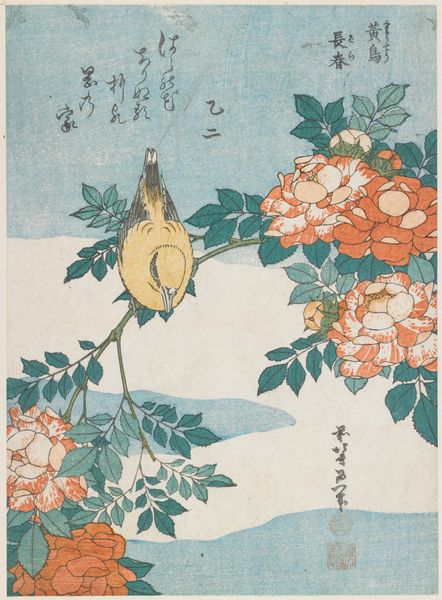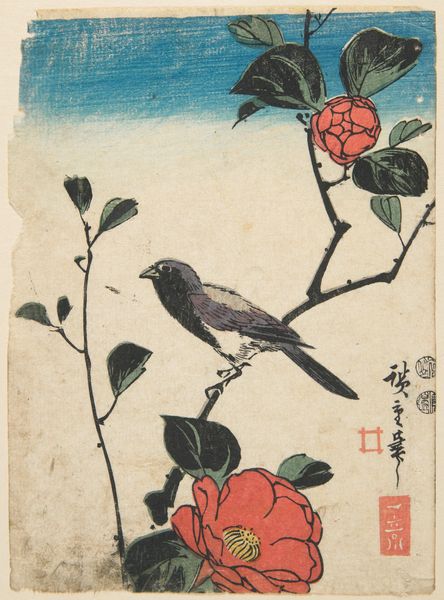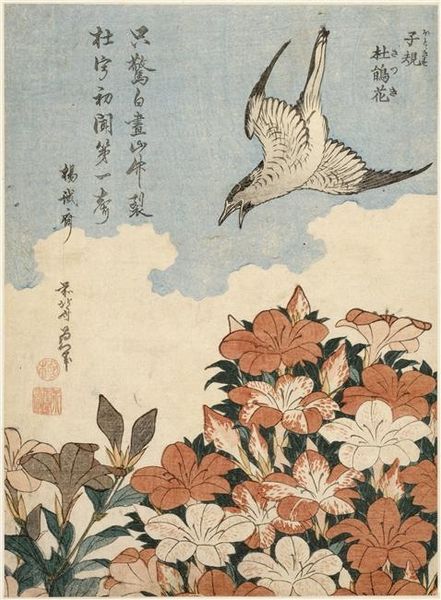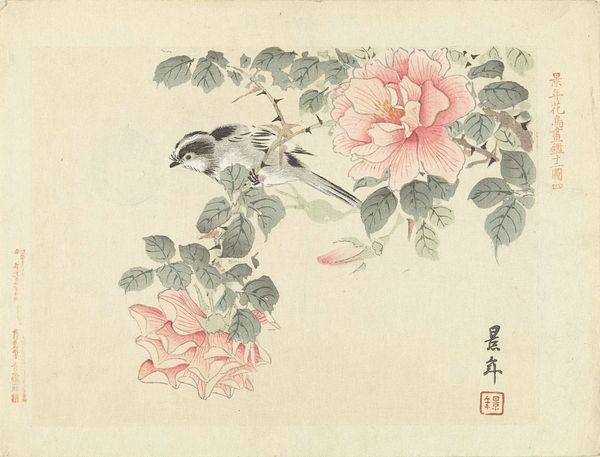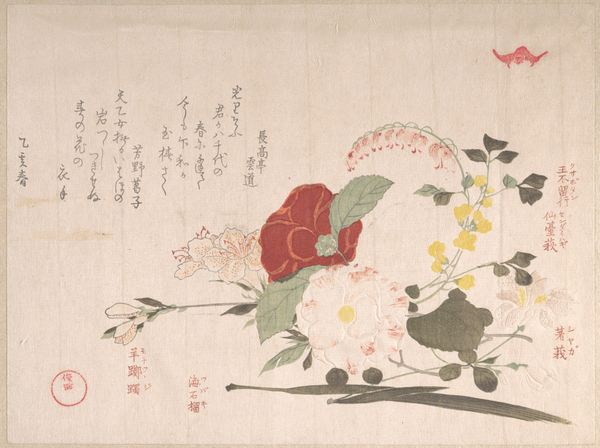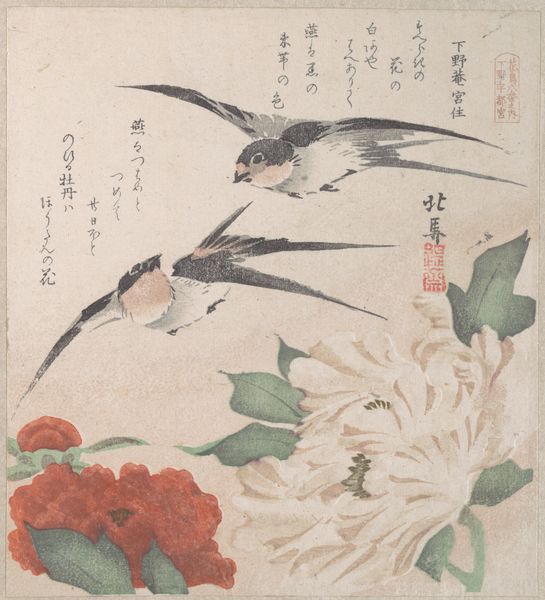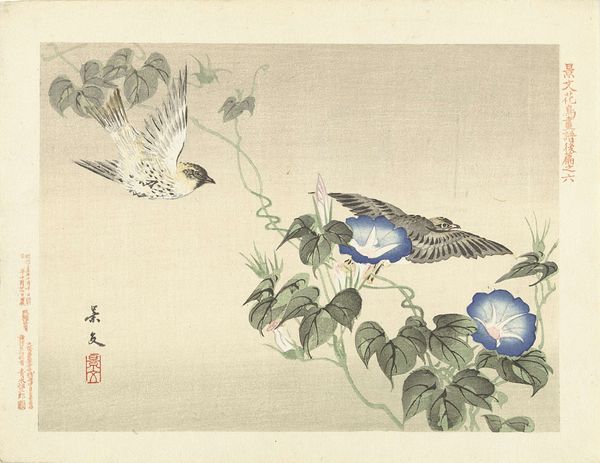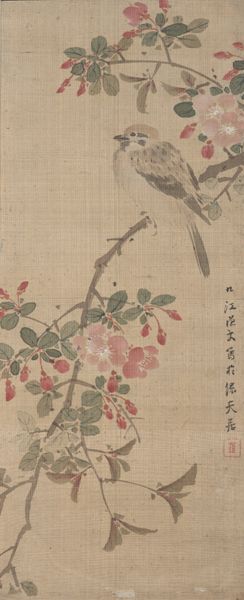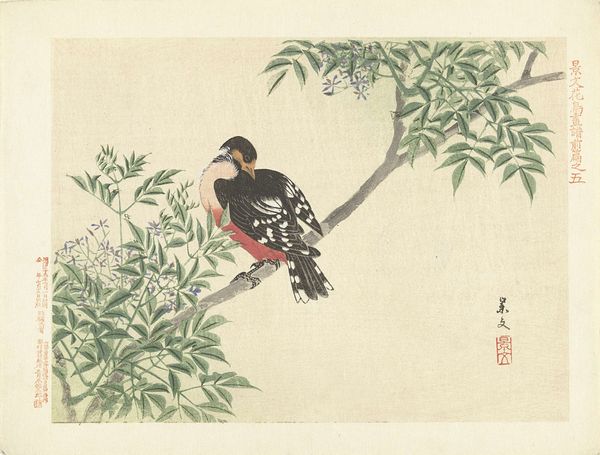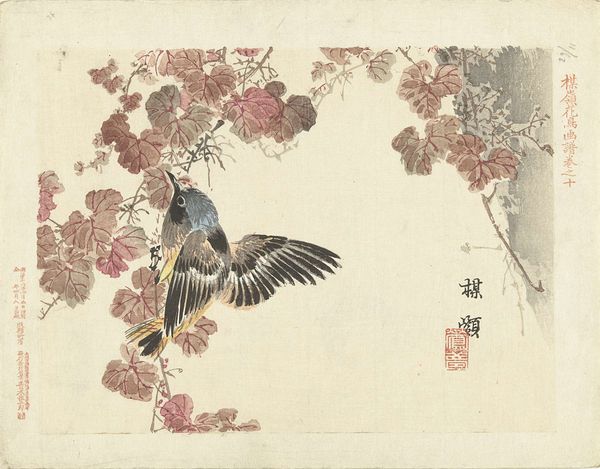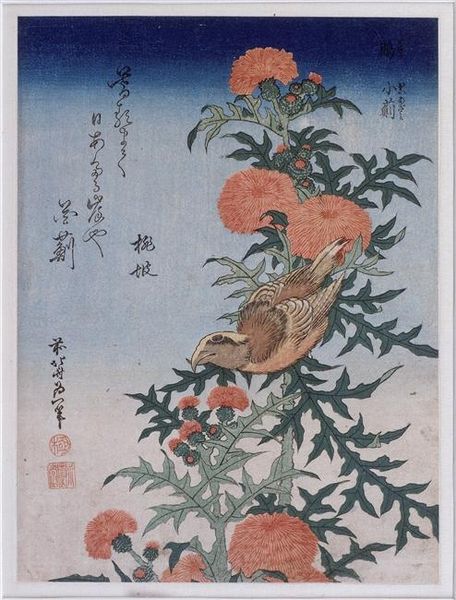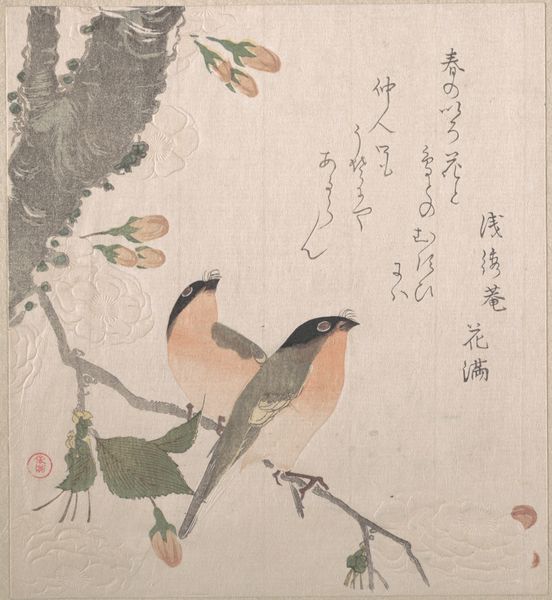
Dimensions: 10 × 7 1/4 in. (25.4 × 18.4 cm) (image, sheet, vertical chūban)
Copyright: Public Domain
Curator: We're looking at Katsushika Hokusai's "Warbler and Roses," a woodblock print made around 1834, now housed in the Minneapolis Institute of Art. Editor: It strikes me as incredibly serene. The palette is soft, almost muted, despite the vibrancy of the roses. The upside-down bird adds a surprising element of playful asymmetry. Curator: The image beautifully encapsulates themes common to the Ukiyo-e style, especially the relationship between the natural world and human sensibilities. The warbler itself—known as 'uguisu' in Japanese culture—is associated with springtime and new beginnings, a sonic and visual herald of the season. Editor: Semiotically, the downward-facing warbler, juxtaposed with the opulent, vibrant roses, presents a visual dichotomy. It invites contemplation. Is it about surrender, observation, or a reevaluation of vertical hierarchies? Curator: Roses in Japanese art, while not native, were adopted as symbols of beauty and transient nature. The rose became part of the broader language of flowers where each bloom and its posture, carried layered meaning. Hokusai likely incorporated these meanings, drawing on their perceived link between fragility and desire. Editor: The compositional choices create visual interest—the soft undulations of the implied riverbank, for example, cutting horizontally across the scene provides spatial depth despite the work being ostensibly two-dimensional. Hokusai manipulates foreground and background by shifting planes of focus. Curator: And the poetry inscribed, almost effortlessly balanced amidst the scene, would speak to the cultivated observer of the era—drawing them deeper into the symbolic layering of images and word. Its physical placement within the image subtly roots the visual symbolism into its temporal and societal ground. Editor: It's fascinating how Hokusai brings together line, color, and form with such assuredness to elicit these meditations. There is an essential tension and tranquility at work here. Curator: Hokusai’s grasp of not only technique but also of symbolic languages allowed him to render such multifaceted and resonating visions. Editor: The mastery displayed in this work certainly challenges a static interpretation, opening channels for ongoing contemplation.
